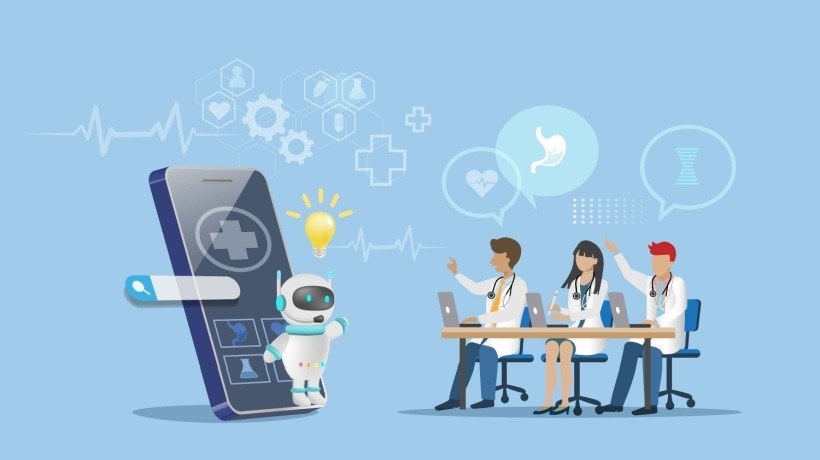Effective Assessments For Med. And Sci. Online
Assessment is an integral part of education, allowing instructors to evaluate the knowledge and skills of their students. Assessments play a critical role in medical and science education, determining if students have the necessary knowledge and competencies to succeed in their future careers. With the increasing popularity of online learning in medical and science education, educators need to design effective and engaging assessments for students.
Importance Of Assessment In Medical And Science Education
Assessment is crucial in medical and science education as it allows educators to evaluate students' comprehension of the subject matter, mastery of specific skills, and readiness for real-world application. In this sense, assessments are not only evaluative but formative as well. They provide feedback to help students improve and develop competencies required for their future careers in healthcare, scientific research, or other related fields.
Moreover, medical and science education assessments should be designed to support student learning. Assessments should be aligned with the course's learning objectives and allow students to demonstrate their understanding of the subject matter. A well-designed assessment provides valuable feedback on student performance, which can help them identify gaps in their knowledge, improve their skills, and deepen their understanding of the subject matter.
Critical Components Needed For Designing Effective Assessments
Alignment
One of the critical components of designing effective assessments is ensuring alignment between the assessment and the learning objectives of the course. Learning objectives should be clearly defined and measurable, allowing instructors to design assessments that accurately evaluate the knowledge and skills that students have acquired. Learning objectives in medical and science education may include specific competencies, such as diagnosing and treating diseases or designing and conducting experiments.
Assessments should be designed to evaluate these competencies with questions and tasks aligned with the learning objectives. For example, if the learning objective is to diagnose a specific disease, the assessment should include questions or tasks requiring students to demonstrate their ability to diagnose it. By ensuring alignment between the assessment and the learning objectives, educators can accurately evaluate the knowledge and skills of their students and provide meaningful feedback to help them improve.
Additionally, alignment between assessments and course objectives ensures the validity of the assessment results. Validity refers to the extent to which an assessment accurately measures what it is intended to measure. The results can validate student learning when assessments align with the course objectives.
Variety
Another essential component of effective assessments is variety. Instructors should design assessments that include various question types and formats, such as multiple-choice questions, short-answer questions, essay questions, and performance-based assessments. This variety can help engage students and provide a more comprehensive evaluation of their knowledge and skills.
For example, multiple-choice questions can evaluate students' understanding of basic concepts and terminology, while essay questions can evaluate their ability to apply those concepts to real-world scenarios. Performance-based assessments, such as lab simulations or case studies, can evaluate students' ability to apply their knowledge and skills to complex problems.
However, it is essential to note that while various assessment types are desirable, care should be taken to ensure each assessment type is well-aligned with the course objectives. This means that the assessment type should match the competency being evaluated and provide a valid measure of student learning.
Moreover, the variety in assessment types should be one of many considerations. The assessment's actual content should also include topics and material from different areas of the subject matter.
Feedback
Providing feedback is another essential component of effective assessments. Feedback should be timely, specific, and meaningful to help students understand their strengths and weaknesses and to identify areas where they can improve. Feedback should also be designed to support student learning, primarily helping students develop competencies required for their future careers.
You should provide effective feedback both during and after the assessment. During the assessment, instructors can provide immediate feedback to students, for example, through automated feedback mechanisms built into the online assessment tool. This type of immediate feedback can benefit formative assessments, where students can learn from their mistakes and improve their performance.
After the assessment, instructors should provide more detailed feedback to help students understand their strengths and weaknesses. This feedback can be provided in various formats, such as written comments or audio/video feedback. Instructors can also use this opportunity to provide additional resources and guidance to help students improve their performance in future assessments.
Technology
Technology can be vital in designing effective assessments for online medical and science courses. With the advancement of educational technology, instructors have access to a wide range of assessment tools that can help create engaging and effective assessments. For example, online assessment tools can allow instructors to create assessments with various question types and formats, automate grading, and provide immediate feedback to students.
Moreover, technology can also be used to enhance the authenticity of assessments. For example, virtual simulations can recreate real-world scenarios that require students to apply their knowledge and skills to solve complex problems. These simulations can provide a more realistic assessment of student competencies, help engage students, and provide a more immersive learning experience.
However, I would like to point out that technology should be used to enhance, not replace, traditional assessment methods. While technology can provide valuable tools and resources, designing assessments aligned with the course's learning objectives that accurately evaluate student knowledge and skills is still essential.
Conclusion
Effective assessments are essential for evaluating student learning in medical and science online courses. Assessments should be designed to support student learning, primarily helping students develop the competencies required for their future careers. This can be achieved through alignment, variety, feedback, and technology.
Instructors should ensure that their assessments are aligned with the course's learning objectives, allowing students to demonstrate their understanding of the subject matter. Additionally, assessments should include various question types and formats, providing a more comprehensive evaluation of student knowledge and skills.
Feedback should also be provided to students to help them understand their strengths and weaknesses and to identify areas where they can improve. Finally, technology can enhance the effectiveness of assessments, providing instructors with a wide range of tools and resources to create engaging and effective assessments.
Overall, the design of effective assessments is an essential component of medical and science online courses, providing instructors with valuable insight into the knowledge and competencies of their students and supporting student learning in their future careers in healthcare, scientific research, or other related fields.









